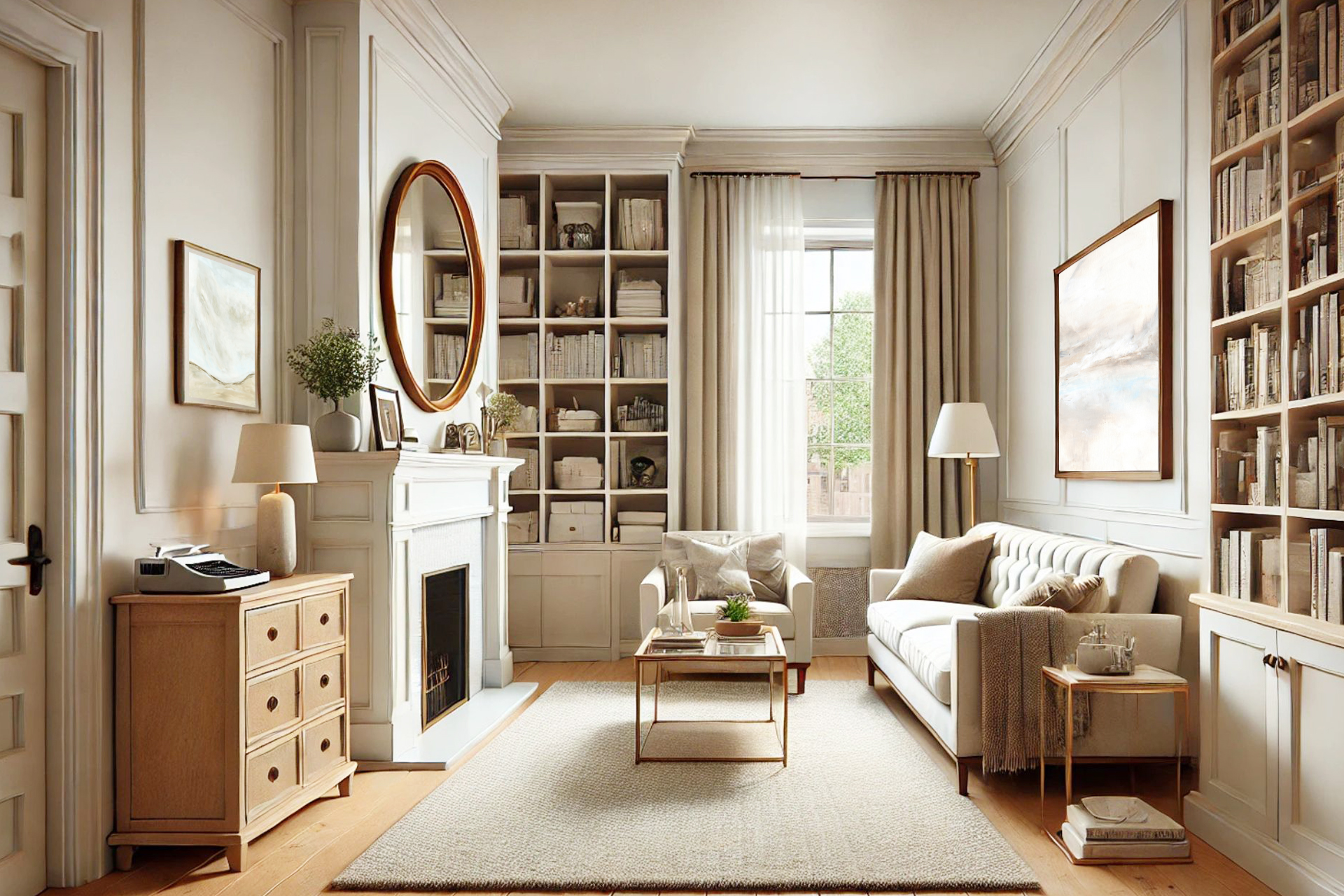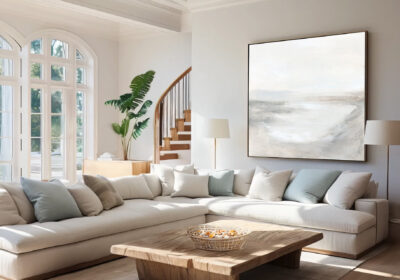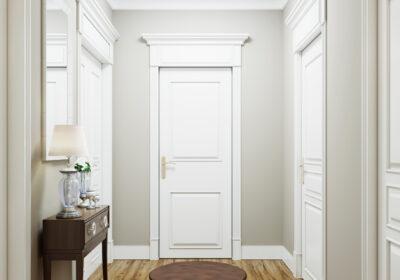Learn how to make a small room feel bigger – for when you’re looking for that no demo reno kind of feeling.
Living in a small room can be tricky, especially when it starts feeling more cramped than cozy.
But you don’t need to start a renovation or spend a ton of money to make a difference. A few small design changes can totally transform how your room feels.
Things like rearranging furniture, using mirrors, or adding the right kind of lighting might sound basic, but trust me, they work.
I’ve tested these ideas myself, and now my small space feels open, comfortable, and even dare I say, a little stylish.
If you’re ready to make your small room feel bigger, let’s get into it.
This post contains affiliate links. If you buy something though these links, I may earn a commission at no cost to you. Thanks!! Featured image artwork source: Undeniable and Aura from NLS Design – Abstracts
Mirrors Make a Huge Difference
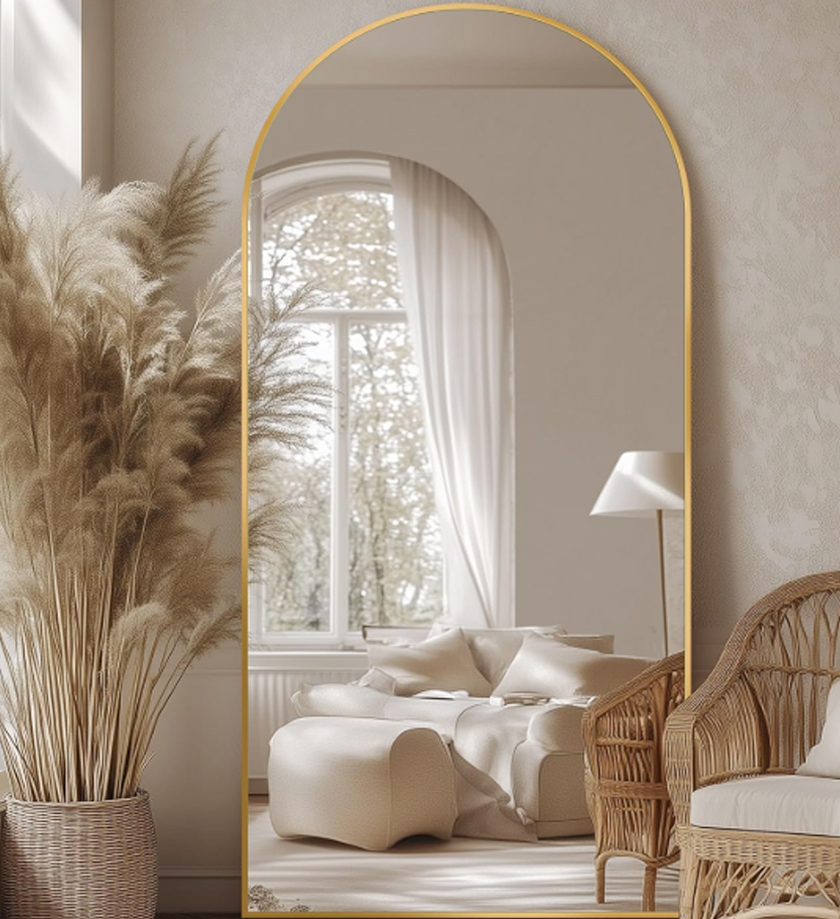
When I first tried using mirrors to make my room feel bigger, I didn’t expect much.
But it really works.
Mirrors do this amazing job of reflecting light and creating the illusion of extra space, so your room feels brighter and more open.
Here’s what worked for me.
I hung a large mirror on the wall opposite a window, and suddenly the whole room felt twice as bright. I also added a smaller, round mirror above a side table to break up the blank wall and give the room some depth. If you’re short on floor space, mirrored furniture is another great option.
Another thing I’ve done is create a little gallery wall with smaller mirrors in different shapes. It’s functional and adds character without cluttering up the space.
Go Vertical
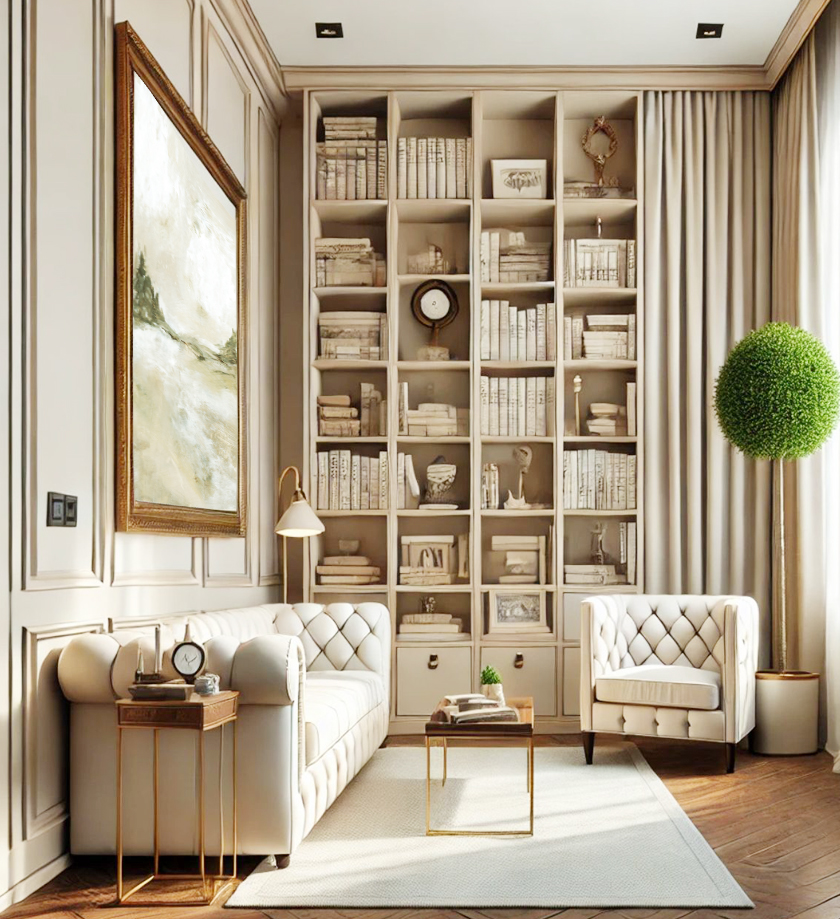
One of the best ways to make a small room feel bigger is to think about the space above your head. It’s easy to focus on floor space, but using your walls effectively can make a huge difference.
Here’s what I’ve done in my own space.
I swapped out my short curtains for floor-to-ceiling ones (I bought these), and it instantly made the room feel taller. Even if your windows aren’t that high, hanging the curtain rod close to the ceiling creates the illusion of height.
Another trick is using vertical storage.
Tall shelves or bookcases draw the eye upward and make the room feel larger than it actually is. I’ve even added some floating shelves above furniture to maximize wall space without making things feel cluttered.
Art can work wonders too. Instead of small pieces scattered around, I hung one large vertical print on the wall. It acts like a focal point and adds depth, making the space feel more open.
(I would love it if you would check out all of my art of course.)
Be Smart About Furniture
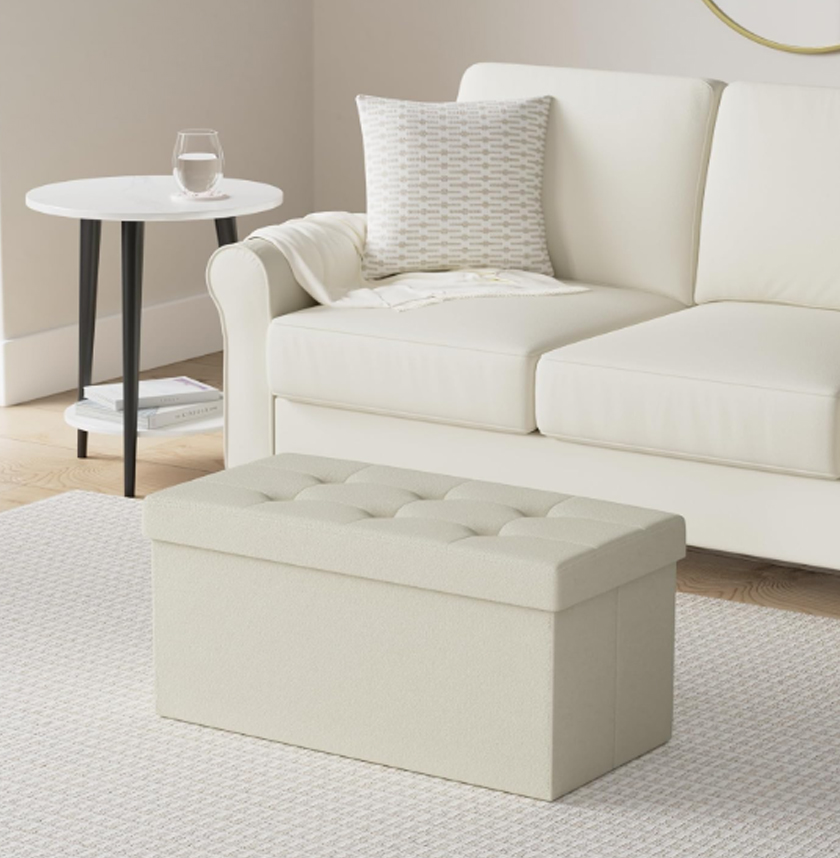
Furniture can make or break how a small room feels.
If you’re not careful, big or bulky pieces can take over and make the space feel cramped. But with the right approach, your furniture can actually help the room feel more open.
One thing that worked for me was swapping out a heavy coffee table for a smaller, round one with a glass top. It keeps the room feeling airy and doesn’t take up as much visual space.
I also started looking for multi-functional pieces, like an ottoman with hidden storage. It’s a lifesaver for keeping kid clutter out of sight without sacrificing style.
Another tip is to leave a little breathing room.
Pushing all your furniture against the walls might seem like the best way to save space, but it actually makes the room feel smaller. Instead, try floating pieces like your sofa or chairs a few inches away from the wall. It creates the illusion of more space and improves the flow of the room.
Finally, stick to furniture with legs.
Pieces that sit directly on the floor can feel heavy, but legged furniture lets you see more of the floor, which automatically makes the room feel bigger. It’s a small detail, but it really works.
Layer Your Lighting
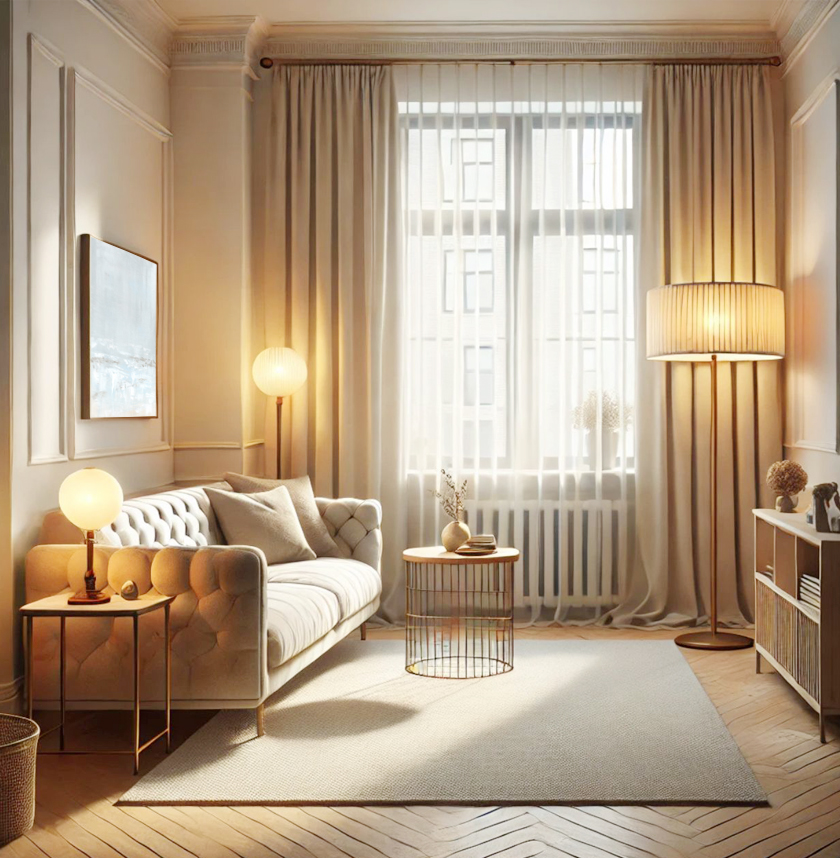
Good lighting can completely change how a small room feels.
Relying on a single overhead light often makes a space look flat and even smaller than it is. Plus, it doesn’t do anything for your complexion.
Adding layers of light gives the room depth and makes it feel more inviting and spacious.
Here’s what I did in my own space. First, I added a floor lamp to brighten up a dark corner that always felt like wasted space. Then, I brought in table lamps for softer, more focused light.
Mixing different types of lighting helps create zones in the room, which tricks the eye into seeing it as larger.
Another easy fix is adding wall-mounted lights or sconces. They free up floor space and add a stylish touch. If you’re on a budget, string lights or LED strips can be a fun way to highlight certain areas, like shelves or the edge of a mirror.
The key is to avoid relying on just one light source. A mix of ambient, task, and accent lighting creates a layered effect that makes the room feel bigger and cozier at the same time.
Declutter and Simplify
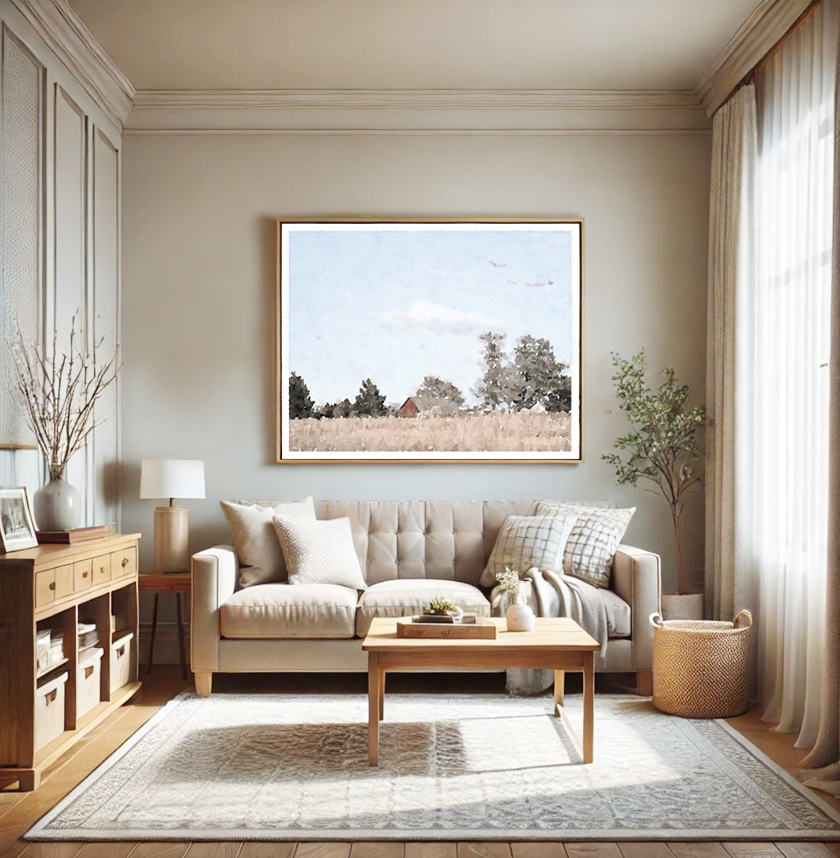
This might sound obvious, but it’s worth saying – clutter makes any room feel smaller.
The more “stuff” you have out in the open, the more cramped your space will feel. Taking the time to declutter and simplify your decor can make a huge difference.
I started by getting rid of things I didn’t really need or use.
Then, I invested in a few stylish storage options, like baskets and decorative boxes, to hide the things I wanted to keep, but didn’t need to see every day. It’s amazing how much bigger the room felt once I cleared off surfaces and gave everything a proper home.
I also kept my decor simple.
Instead of covering every inch of the walls with art or photos, I focused on a few key pieces that really stand out. For example, a large abstract print or a scenic piece of art can make the room feel more open, especially when it’s placed strategically to draw the eye.
Less really is more when it comes to small spaces. The less visual clutter there is, the easier it is for the room to feel open and airy.
Use Color to Your Advantage
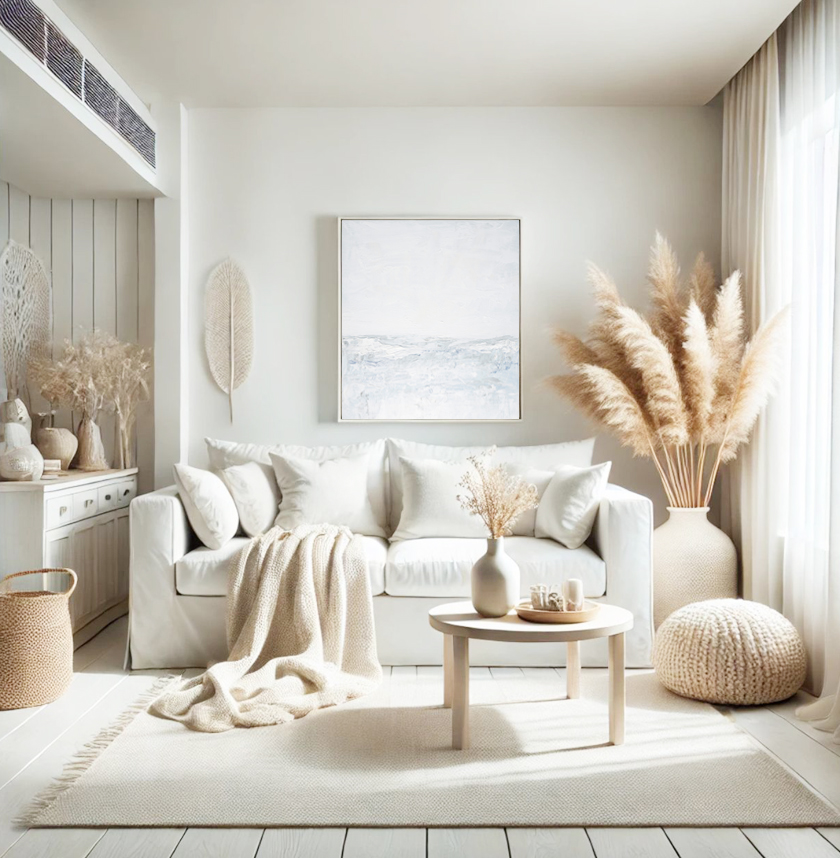
Color can completely change how a room feels.
Light, neutral tones make a space feel open and airy, while darker shades can make it feel cozier but smaller. If you want to know how to make a small room feel bigger, stick to lighter colors for the walls, furniture, and decor.
In my own space, I painted the walls a soft off-white and added pops of color with pillows, art, and rugs.
This way, the room feels bright and fresh without being boring. I also used similar tones for larger furniture pieces to keep the look cohesive.
Another trick is to stick to a monochromatic color scheme.
Using different shades of the same color helps the space flow better, making it feel larger. For example, pairing light gray walls with slightly darker gray curtains and furniture gives the room depth without breaking up the space.
If you want to add some contrast, try a bold piece of art or a colorful rug.
Just make sure it’s not too busy—clean lines and simple patterns will always make a small room feel bigger than cluttered, chaotic designs.
Add Texture and Depth
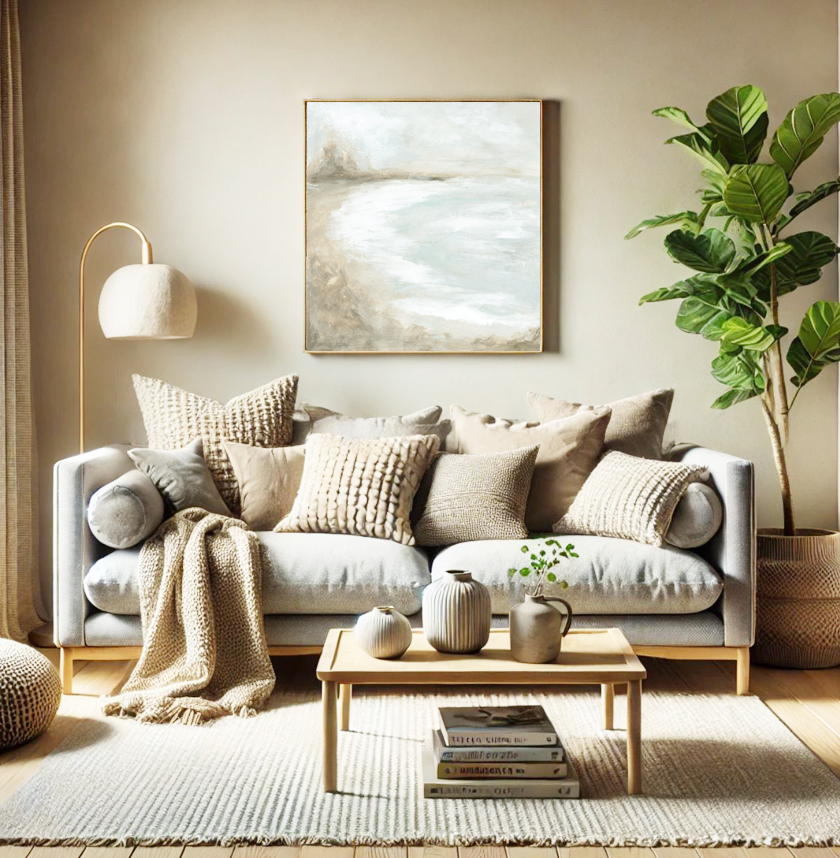
Texture is often overlooked, but it’s a great way to make a small room feel bigger and more interesting.
Adding different materials and finishes gives your space dimension, making it feel less flat and more dynamic.
I like to mix things up by layering a cozy throw blanket over a sleek sofa or adding a woven basket next to a metal side table.
Rugs are another great way to add texture. In my room, I went with a soft, neutral rug that grounds the space without making it feel heavy. (My personal favorite are Ruggable rugs since you can wash them easily.)
Another easy way to create depth is with art.
For example, a landscape with a distant horizon or an abstract print with a lot of movement can draw the eye and make the room feel bigger.
Plants are another favorite of mine.
A few well-placed plants add texture, height, and a natural element that makes any space feel fresh and inviting. Whether it’s a tall fiddle-leaf fig in the corner or a small cluster of succulents on a shelf, plants make the room feel more alive and open.
Adding texture and depth isn’t just about how the room looks—it’s about how it feels. When you combine different elements thoughtfully, your small room will not only feel bigger but also more balanced and welcoming.
How to Make a Small Room Feel Bigger
Making a small room feel bigger doesn’t have to be complicated or expensive. With a few simple changes—like adding mirrors, using vertical space, and keeping things clutter-free—you can transform your space into something that feels open and inviting.
Try out a few of these tips, and you’ll see just how easy it is to create a room that feels twice the size without knocking down any walls!

